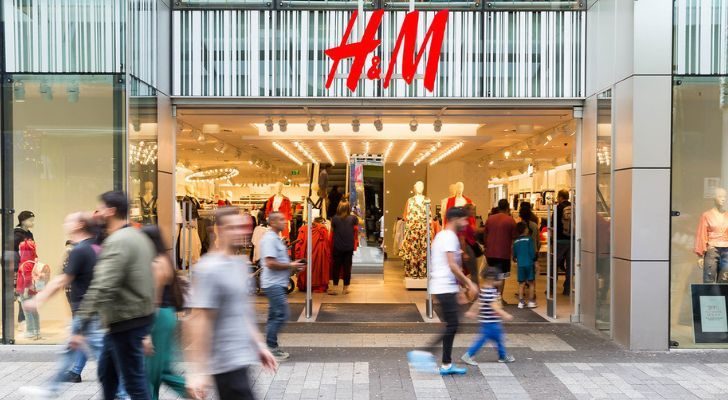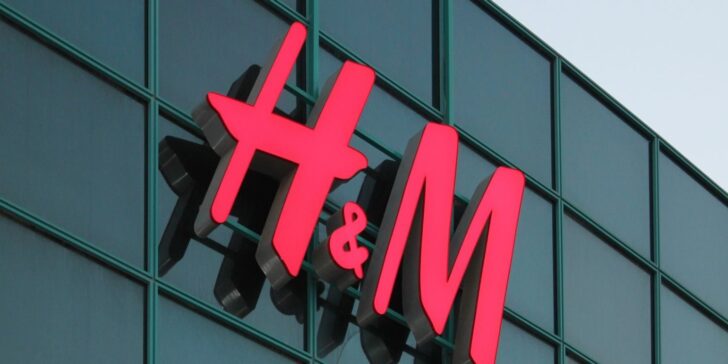Welcome to the world of H&M, where fashion meets affordability in a whirlwind of style!
From its humble beginnings in Sweden to its global domination, H&M has a fascinating history packed with intriguing facts you won’t want to miss.
Join us as we explore all the juicy details about H&M, uncovering everything from celebrity collaborations to sustainability initiatives that make this fast-fashion giant truly unique.
H&M was founded by Erling Persson in 1947 in Västerås, Sweden, under the name “Hennes” (“Hers” in English). At its founding, it focused on selling women’s clothes.
H&M started its journey toward becoming a global brand when it opened its first international store in Norway in 1964.
In 1968, Persson decided to venture into another business, buying a hunting and fishing apparel store called Mauritz Widforss. He then merged both businesses, naming the brand “Hennes & Mauritz.”
H&M signed ABBA’s lead singer Anni-Frid Lyngstad as the brand’s first supermodel in 1973.
Two decades after hiring ABBA’s star, H&M made another historical achievement in celebrity endorsements by bringing in the Big Six , the most famous supermodels of the 1990s!
During the 2022 Met Gala, Spiderman: Homecoming’s Laura Harrier wore a custom dress made by H&M – a stunning dark gray metallic dress with a built-in corset.
In 2012, H&M marketed David Beckham’s underwear collection creatively, placing humongous shopping bags at different places across London, such as Tower Bridge, Covent Garden, and Victoria Station.
New York’s flagship H&M store on Herald Square is the largest H&M store in the world. The 63,000-square-foot (5,853 square meters) behemoth occupies four floors, and its exterior is wrapped in LCD displays.
Wes Anderson wrote and directed Come Together, a short Christmas-themed film as a commercial for H&M in 2016. Its central theme revolves around finding joy with others despite trying times, emphasizing the spirit of fortitude during the holiday season (and advertising clothes, of course).
By 2022, H&M had a whopping 4,465 stores worldwide! The US alone is home to five hundred and twenty of them.
Speaking of the United States, it’s one of H&M’s biggest markets in terms of net sales, totaling 33.4 billion Swedish krona (or around 3.2 million USD) in 2022.
H&M’s first fashion designer collaboration was with Karl Lagerfeld in 2004. Although the Lagerfeld silhouette shirts, sequin jackets, and lace dresses were the three best-sellers, the whole collection was so popular that most stock was sold on the first day!
H&M ranks as the world’s second-largest clothing retailer behind Inditex, the owner of Zara.
The clothing company owns numerous other clothing brands, too, such as COS, Weekday, Monki, & Other Stories, Arket, and Afound.
H&M expanded its offerings in 2009 by entering the furniture market and introducing H&M Home.
In 1974, H&M was publicly listed on the Stockholm Stock Exchange. This was also the year when the company decided to officially rebrand under the abbreviation “H&M.”
H&M’s first logo was a simple wordmark of the brand’s name, “Hennes.” The wordmark logo style was kept when Hennes and Mauritz combined in 1968, but as “Hennes & Mauritz.” It was in this second logo that the “H&M” abbreviation appeared for the first time, too.
H&M introduced an activewear line, H&M Move, on August 4, 2022. They referred to activewear as movewear to emphasize that their activewear isn’t just ideal for traditional sports activities but also for a wide range of physical activities, such as yoga and running.
Erling was the CEO of H&M for over three decades. His tenure ended in 1982, when he finally decided to step down and hand the position to his son, Stefan Persson.
In 1980, H&M partnered with the Swedish mailing company Rowells to deliver its products directly to customers’ homes, embracing an early form of eCommerce called teleshopping, which originated in 1979.
Versace collaborated with H&M in 2011, selling a velvet bomber jacket that retailed at $129. The collection, which sold out in just 30 minutes, was hyped up by Kanye West, who wore it to that year’s Victoria’s Secret Fashion Show.
The most expensive product H&M has sold was a hand-sewn multi-colored beaded dress, a collaboration between H&M and Balmain that sold for an eye-watering $649!
H&M has a garment collecting program where they offer a discount for customers who bring in their old clothes – whether they’re from H&M or not!
H&M published its first Corporate Social Responsibility (CSR) report in 2002, beginning the brand’s journey towards sustainability.
The company then started the Conscious Collection in 2010, introducing clothing made from materials like recycled polyester and organic cotton.
One of the awardees of H&M’s Global Change Award in 2017 was Jalila Essaidi for her invention of a fabric made from cow dung called Mestic.
A power plant in Sweden burned through 16.8 tons (15.2 tonnes) of unwanted H&M clothes in 2017 as an alternative to coal.
H&M has a policy called the “Sustainability Commitment,” which ensures transparency, fair wages, and environmental due diligence within the supply chain when engaging with potential manufacturers.
In 2018, the company faced backlash over a green hoodie worn by a black child. What enraged consumers was the phrase featured on the front, “coolest monkey in the jungle,” which they deemed as racist.
H&M opened its first store in Beijing, China, in 2007. The three-story flagship store closed in 2022, though, due to declining sales amid boycotts from Chinese consumers for not using Xinjiang cotton.

Throughout the years, H&M has achieved remarkable feats. It has designed and sold countless comfy yet stylish clothes, built thousands of stores worldwide, and provided new opportunities for textile inventors.
Despite its impressive achievements, H&M has not been exempt from challenges. The brand has faced failures and criticism from consumers due to certain mishaps.
At the end of the day, H&M is a fast-fashion clothing company. It can be as sustainable as it wants, but it still ends up with an incomprehensible amount of clothing in landfill.


















